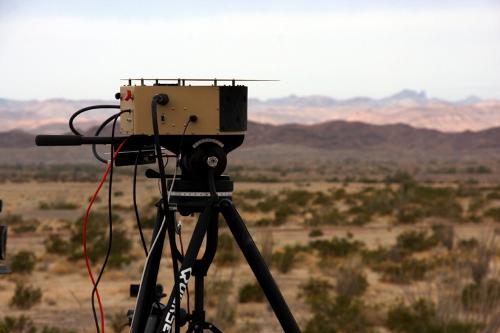By Kalwinder KaurSep 21 2012
With intent to promote threat detection using man-portable visual threat detection devices from stand-off distances, the Cognitive Technology Threat Warning System (CT2WS) program was launched by DARPA in 2008.
 Tag Team Threat-recognition Technology Incorporates Mind, Machine
Tag Team Threat-recognition Technology Incorporates Mind, Machine
As part of CT2WS, an innovative technology kit was created for enabling detection up to 91% of targets during testing with low false-alarm rates, in addition to extending a warfighter’s field of view to 120 degrees that can be achieved through tandem use of all components of the kit. Target detection up to 100% was achieved by integrating commercial radar including Cerberus Scout surveillance system.
The CT2WS system features three component technologies that can be modified for operation with existing systems and fulfills specific mission requirements. The technologies are:
- A 120-MP, tripod-mounted, electro-optical video camera having a 120-degree field of view
- Cognitive visual processing algorithms that operate on laptops or related systems for detection of potential targets and cue images for operator review
- An electroencephalogram (EEG) cap for monitoring operator’s brain signals followed by recording upon threat detection.
Inspired by the signaling efficacy of the P-300 brainwave in human brain, the CT2WS was constructed. Improvement in imagery capturing and filtering results- capable sensors will enable a human user wearing an EEG cap to quickly view the filtered image set, thereby activating the brain’s natural threat-detection ability. Users can see up to 10 images per second. Also, the brain signals make the computer identify significant images.
False alarms can be eliminated by adopting EEG-based human filtering. The cognitive algorithms show several events that represent threats or targets. Around 810 false alarms per hour were returned by verification of the full CT2WS kit, absent radar, the sensor and cognitive algorithms. The operator wearing the EEG cap can bring 91% increase in target recognition rate, with dramatic decrease in false alarms.
Field tests of the CT2WS system were performed and a final demonstration of the CT2WS system was presented by DARPA to Army officials at Fort Belvoir, Virginia. The CT2WS technology is being shifted to the Army’s Night Vision Lab.
Disclaimer: The views expressed here are those of the author expressed in their private capacity and do not necessarily represent the views of AZoM.com Limited T/A AZoNetwork the owner and operator of this website. This disclaimer forms part of the Terms and conditions of use of this website.